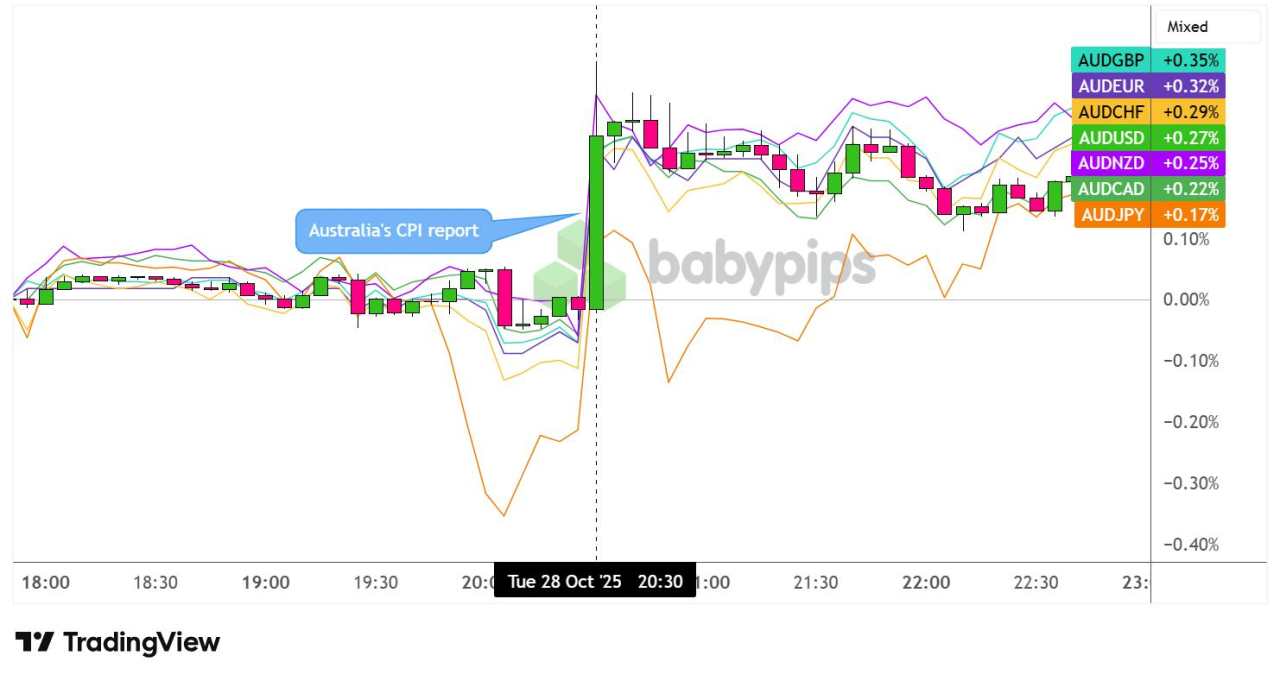Australia’s consumer price index rose 3.2% year-over-year in the third quarter of 2025, marking the highest inflation rate in over a year and landing above the Reserve Bank of Australia’s 2-3% target band for the first time since Q2 2024.
Key Takeaways
- Headline CPI increased 3.2% annually in Q3 2025, significantly above the 3.0% consensus forecast and accelerating from 2.1% in Q2
- Quarterly inflation rose 1.3%, driven primarily by housing (+2.5%), recreation and culture (+1.9%), and transport (+1.2%)
- Trimmed mean inflation climbed to 3.0% annually, up from 2.7% in Q2 – the first increase since December 2022
- Electricity costs surged 9.0% quarterly and 23.6% annually, driven by price reviews and the timing of government rebates
- Rental inflation continues easing to 3.8% annually from 4.5% in Q2, the weakest growth since September 2022
- Services inflation rose to 3.5% annually while goods inflation jumped to 3.0% from 1.1% previously
The most significant price rises in Q3 were concentrated in housing, recreation and culture, and transport sectors. Housing costs increased 2.5% quarterly, with electricity rising 9.0% and property rates and charges climbing 6.3%.
The substantial electricity price increase reflects both annual price reviews and the timing of government rebates. Excluding rebates, electricity prices would have risen 4.8% in Q3.
Link to the ABS Australian CPI Report (Q3 2025)
Property rates and charges recorded their largest quarterly rise since 2014, increasing 6.3% as local councils implemented rate reviews. The increase reflects higher general rates across all capital cities, elevated waste levies, and additional charges.
Food and non-alcoholic beverage inflation remained steady at around 3% annually for the sixth consecutive quarter. Annual services inflation increased to 3.5% from 3.3% in Q2, with notable acceleration in several categories.
All in all, these pushed the headline inflation rate beyond the RBA’s 2-3% target band for the first time since Q2 2024, presenting a significant challenge for policymakers attempting to manage persistent price pressures.
Market Reactions
Australian Dollar vs. Major Currencies: 5-min

Overlay of AUD vs. Major Currencies Chart by TradingView
The currency rallied strongest against the British pound (+0.35%) and New Zealand dollar (+0.25%), while showing more modest appreciation versus the Japanese yen (+0.17%) a few hours after the numbers were printed.
AUD consolidated against majority of its counterparts after its initial bullish reaction, as traders could be holding out for bigger market catalysts such as the FOMC Statement and Trump-Xi meeting.


加载失败()